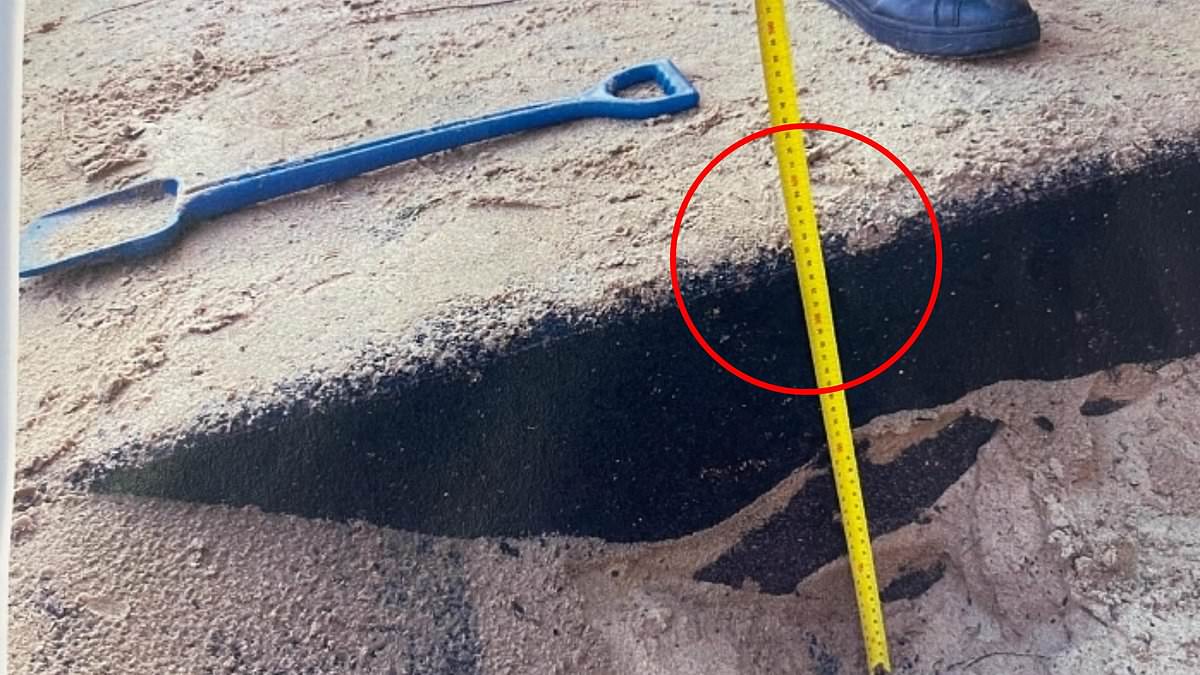A student at an elite Sydney private school has won a huge payout against his public primary school after life-changing injuries suffered at a Year 6 athletics carnival.
On Friday, the now 17-year-old, a current student at Shore, secured a $275,000 judgment against Neutral Bay Primary School and, vicariously, the state of NSW.
The lawsuit concerned a long-jump competition at the public school in 2019 when, at the age of 11, the boy landed on a hard surface in a sandpit and injured his back.
The student, unnamed for privacy reasons, said he suffered a significant spinal injury during the long-jump, resulting in permanent back pain and impairment.
He first brought the suit to the NSW District Court which, in October, dismissed his claim, finding the school had taken adequate steps to protect the students.
In that instance, Judge Robert Newlinds SC found the teachers supervising the event reasonably believed the sandpit was safe and had been sufficiently sanded.
Judge Newlinds ruled that while schools must take reasonable steps to keep students safe during sporting events, they cannot be expected to eliminate risks altogether.
‘There will always be unfortunate consequences and injuries suffered by children at school or at play, even when there has been every reasonably precaution taken to prevent such actions,’ he said.
On appeal, acting Justice John Griffiths, with whom two other judges agreed, disagreed, claiming the risk of harm was foreseeable and easily avoidable.
He held the school failed to ensure there was adequate sand to soften the area where the student landed and the two teachers failed to give adequate supervision.
The primary judge relied on an image of a tape measure alongside the sandpit to infer there was at least was at least 20cm of sand combined with other soft-fall material.
Justice Griffith disagreed with the inference, claiming the tape measure appeared to be kinked in the image and that the lower court relied too strongly on the single image.
‘I am comfortably satisfied that there was a breach of duty on the part of the school in failing to take reasonable precautions to minimise the risk of injury from long jumping,’ Justice Griffiths said.
‘There was a breach of duty here because of the school’s failure to take reasonable precautions which could have prevented [the student’s] injuries.
‘Those precautions were not onerous.’
In determining damages, Justice Griffiths accepted the evidence of the student’s doctor who claimed the injuries were ‘likely to affect his future outcome’.
Medical evidence held the boy suffered ‘significant structural damage’ to a spinal disc which, in turn, caused ‘permanent structural damage’ to his spine.
Both courts accepted the injury interfered with his ‘ability to enjoy life to date’ and would ‘continue to do so’.
During the trial, the student suggested he might wish to follow his mother into IT or finance after school and that his back pain might make sitting all day ‘quite hard’.
He also raised the possibility of joining the military after school but said his experience in cadets at high school had been undermined by his injuries.
Justice Griffiths decided to award a ‘buffer’ of $250,000 for future economic loss and an additional $25,000 for non-economic loss in the form of pain and suffering.
He also rejected the school’s claim the injury would have arisen regardless of the force or hardness of his landing in the pit since it arose from intra-abdominal pressure.
‘It is possible [the student] may still have suffered the same injuries had there been an adequate amount of sand in his landing area,’ he said.
‘However, it is no “answer to the question whether something has been demonstrated as being more probable than not to say that there is another possibility open”.’
Ultimately, the Court of Appeal panel ruled the school had failed to protect the student from a reasonably foreseeable risk of injury.
‘There are undoubted risks in school sports, but they form part of the curriculum in many primary schools and the community rightly recognises that such activities are beneficial for young children when properly supervised,’ the panel ruled.
‘I am comfortably satisfied that there was a breach of duty on the part of the school in failing to take reasonable precautions to minimise the risk of injury from long jumping.’
New South Wales Department of Education has been contacted for comment.
